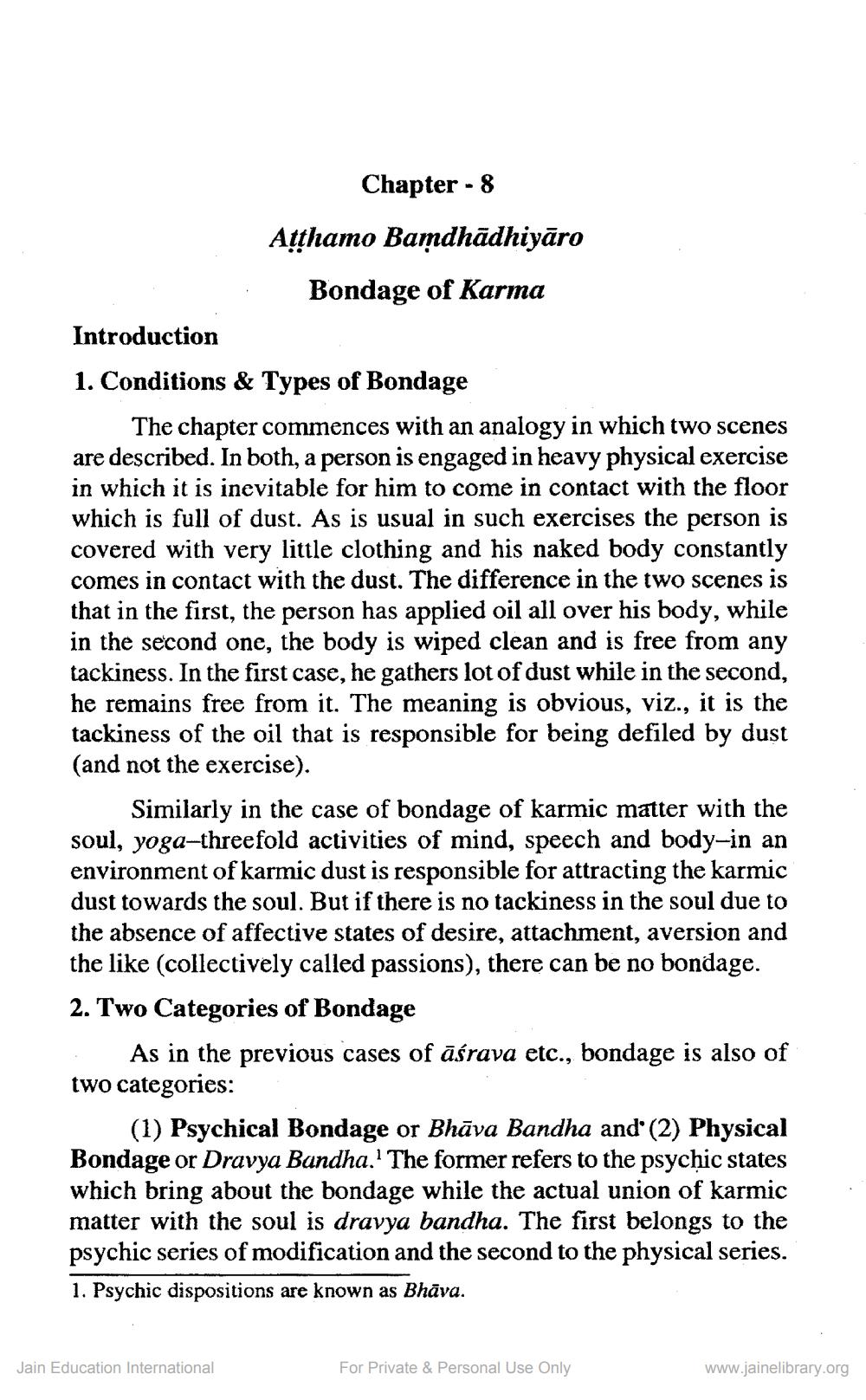________________
Chapter - 8 Atthamo Bamdhādhiyāro
: Bondage of Karma Introduction 1. Conditions & Types of Bondage
The chapter commences with an analogy in which two scenes are described. In both, a person is engaged in heavy physical exercise in which it is inevitable for him to come in contact with the floor which is full of dust. As is usual in such exercises the person is covered with very little clothing and his naked body constantly comes in contact with the dust. The difference in the two scenes is that in the first, the person has applied oil all over his body, while in the second one, the body is wiped clean and is free from any tackiness. In the first case, he gathers lot of dust while in the second, he remains free from it. The meaning is obvious, viz., it is the tackiness of the oil that is responsible for being defiled by dust (and not the exercise).
Similarly in the case of bondage of karmic matter with the soul, yoga-threefold activities of mind, speech and body-in an environment of karmic dust is responsible for attracting the karmic dust towards the soul. But if there is no tackiness in the soul due to the absence of affective states of desire, attachment, aversion and the like (collectively called passions), there can be no bondage. 2. Two Categories of Bondage
As in the previous cases of āśrava etc., bondage is also of two categories:
(1) Psychical Bondage or Bhāva Bandha and (2) Physical Bondage or Dravya Bandha.' The former refers to the psychic states which bring about the bondage while the actual union of karmic matter with the soul is dravya bandha. The first belongs to the psychic series of modification and the second to the physical series. 1. Psychic dispositions are known as Bhāva.
Jain Education International
For Private & Personal Use Only
www.jainelibrary.org




